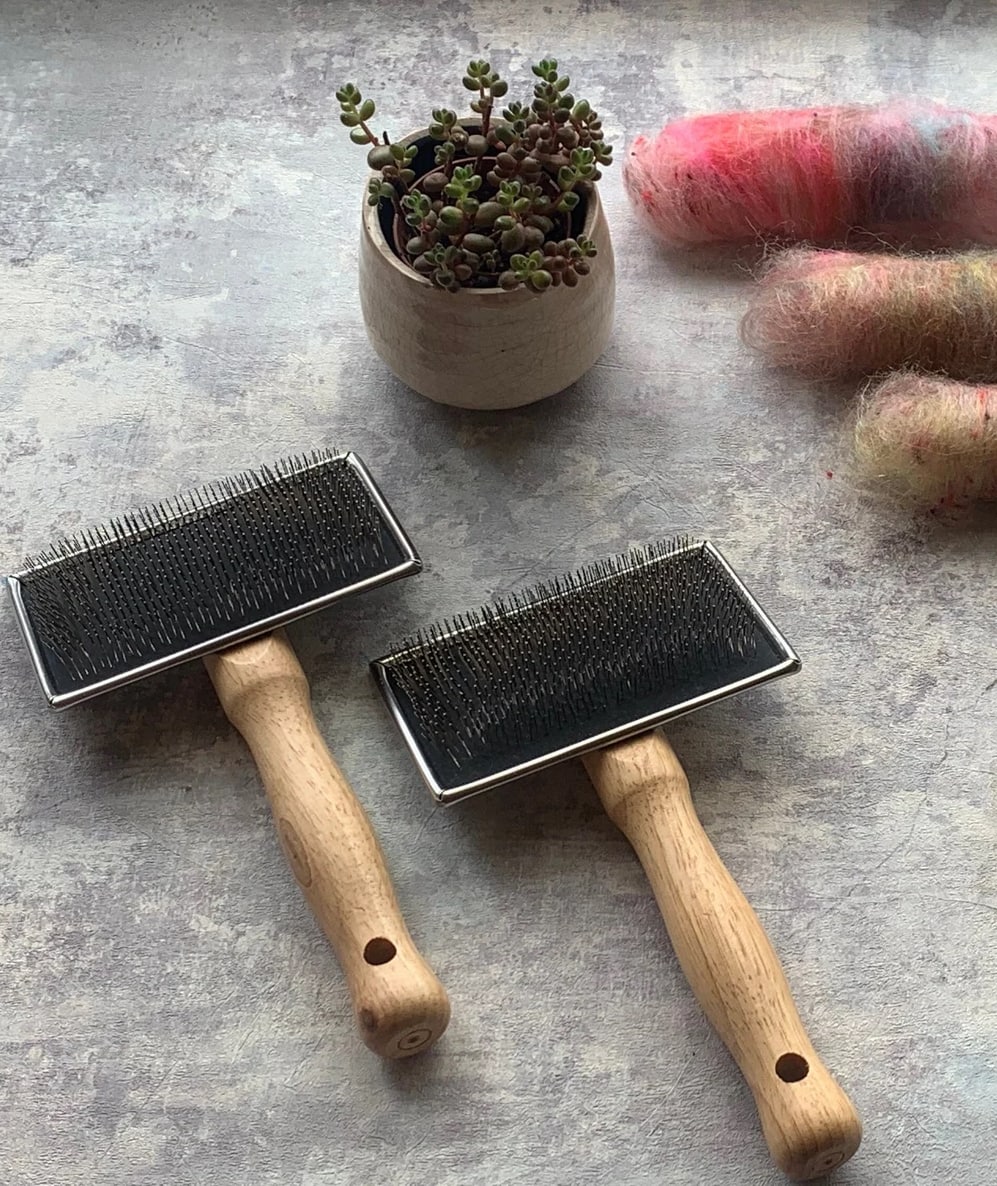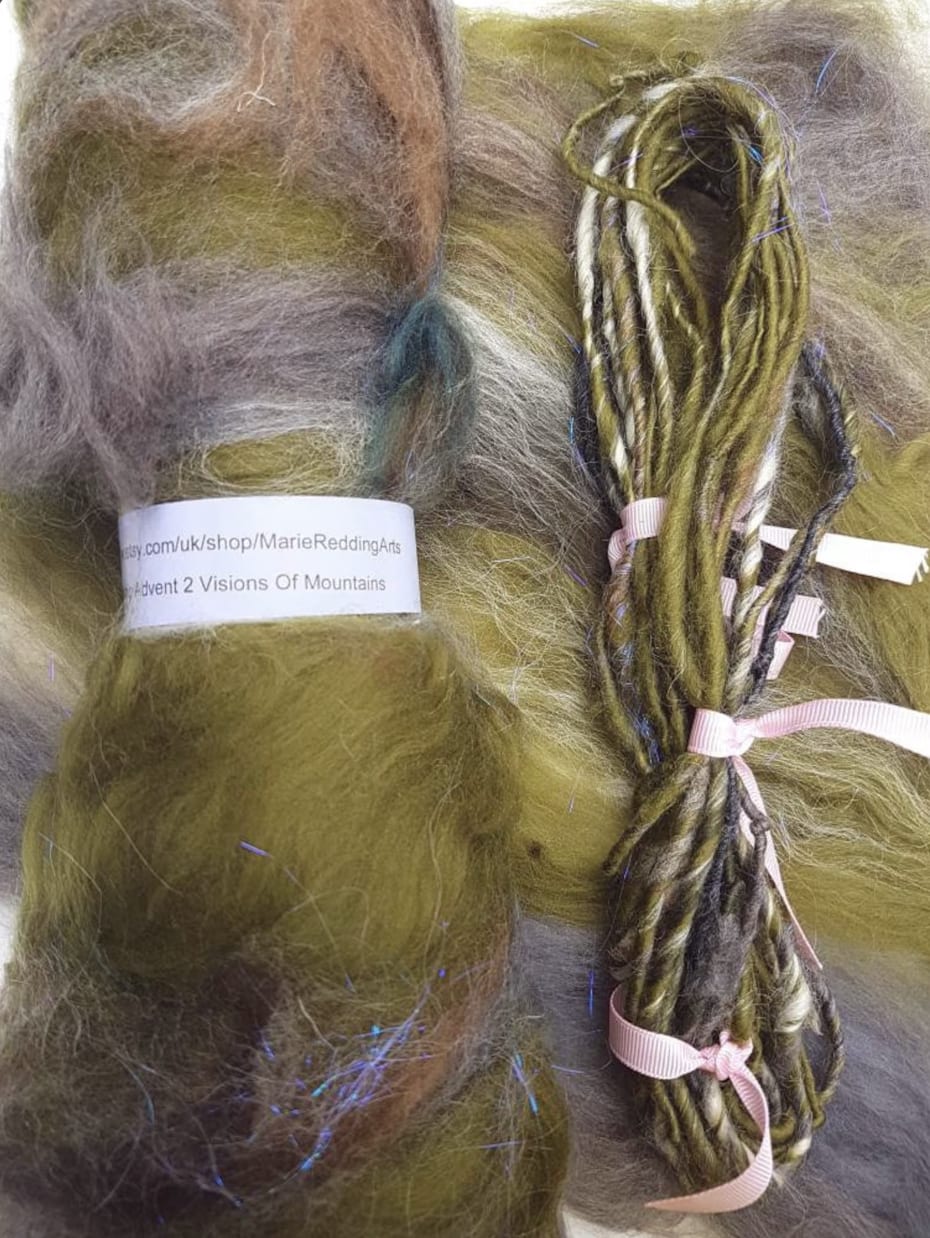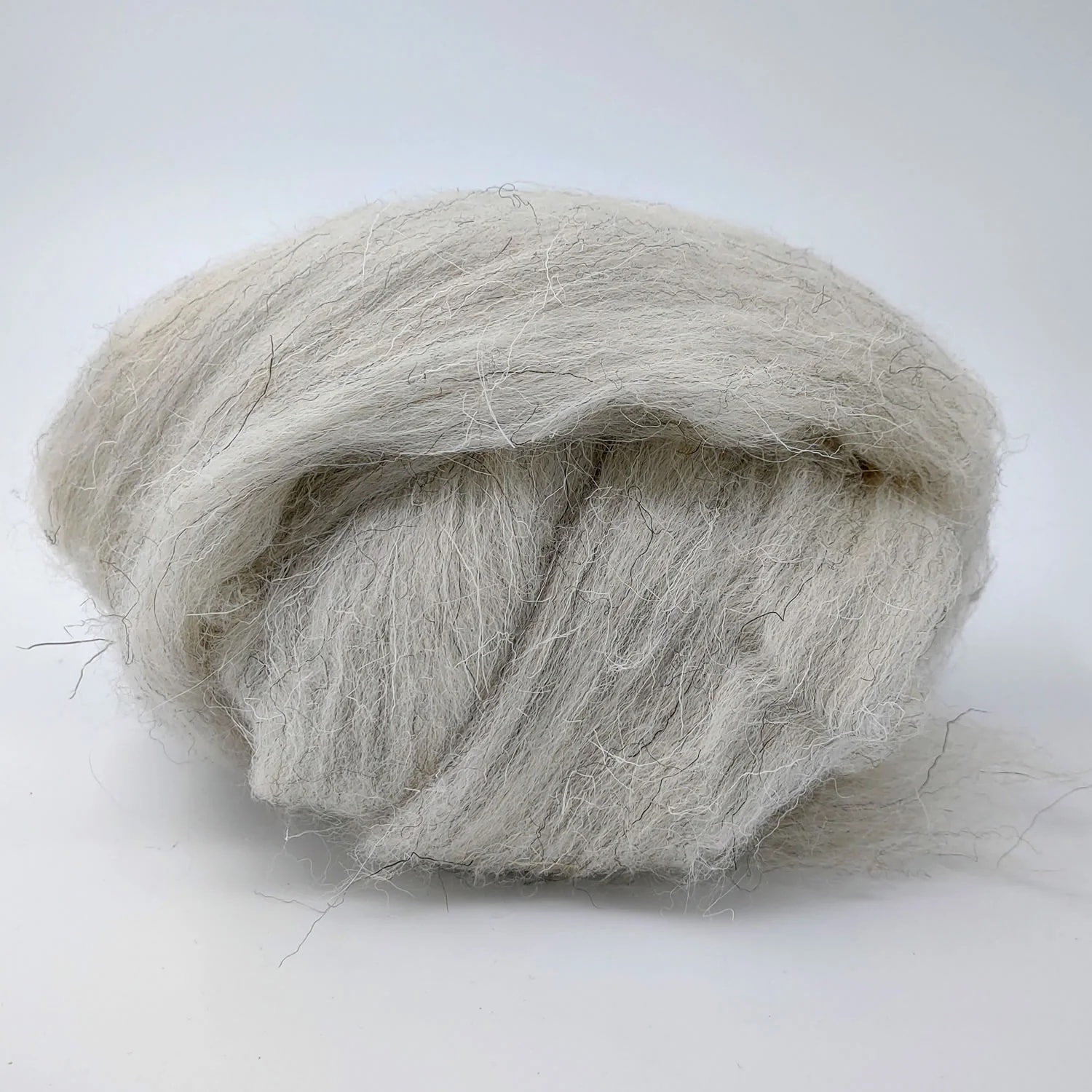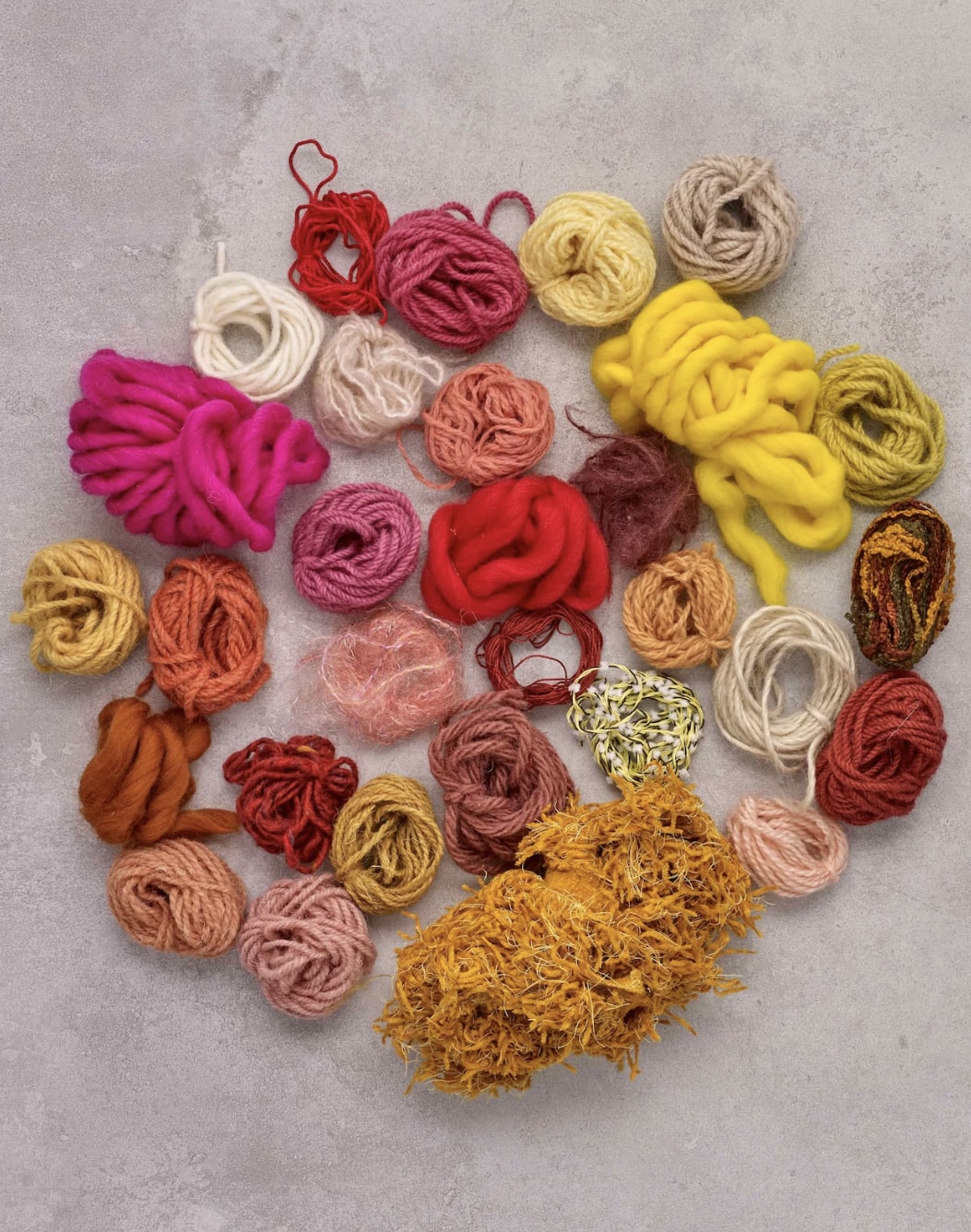Best wool for felting expert guide to all the types
Our most popular posts over the years include: How to make felt slippers, Make a felted flower snowdrop and Needle Felting Robin tutorial. It’s a long time now since first dipping a toe into the wonderful world of felting, but that content remains really popular and each week, one or two readers will ask me about sourcing the best type of wool for the felting process. I’m not entirely sure why it hasn’t occurred to me before to write a post about exactly that, but it has now (finally!). So here’s my guide to the best wool for felting (whether that’s needle felting or hot water felting).
You won’t be surprised to hear that I will focus mainly on different types of wool produced in Britain. (*I know how many of you are from other parts of the world, so I’ll also include some finds from Canada and the United States – scroll to the info section at the end of this post to see them listed).
I’ll take a look at the best breed of sheep, the different fibres and wool type best suited to the felting process – both needle felting and wet felting.
Different types of wool for felting
Firstly let’s take a look at the different types of wool used for felting:
The cheapest (but also most time-consuming) option is to start with raw fleece which you will need to wash and then remove any curly locks. These can be useful for other felting projects where you might want locks of hair (eg for a pony mane).
You can buy scoured wool (which has been washed once and still has some locks attached, so it’s not ideal for felting projects without work either.
Core wool

Felted Sky on Etsy is a great source of core wool for needle felting (particularly if you’re in the US). The image above is for the 2lb option but you can also just buy an ounce.
This is the wool you’d generally use to make the insides or base layers of felting projects and the basic idea is that it helps save your best wool for the top layer. It tends to be cheaper, less attractive looking wool that should to shape quickly and easily. The important thing to consider when choosing the right wool for this is how quick and easy to shape the core wool you choose is.
Best core wool for felting
At the end of the day the answer to this question boils down to personal preferences but I have a few favourites to share with you here.
If you have a local wool shop it’s a good idea to start there, but you can also buy everything you might need to get felting from an online craft store, marketplace (such as Etsy) and independent producers/sellers.
First off, Sandy at Lincolnshire Fenn Crafts is a GREAT resource for all things needle felt-related.
Sandy’s Core wool is a mix from British sheep breeds and is available from her online shop. Coarser wool in texture, it felts easily into shape. This wool has gone through a normal washing process but small amounts of vegetable matter may be present. If this bothers you, you can remove vegetable matter (eg grass seeds and burrs) from raw wool by using the wool carding technique (more details on that later).
As it’s a coarser wool generally used for stuffing, and therefore won’t be seen, carding is unlikely to be necessary for core wool.

Other sources for core wool
Heidi Feathers on Etsy is another great resource for all things felting. Heidi Feathers core wool is a best seller on Etsy for good reason with a natural off-white colour and is wonderfully easy and quick to work with. Made from the finest soft Corridale sliver with criss-crossed fibres, it has been combed into a roving (a long and narrow bundle of fibre). Ethically sourced and available in Small or Medium. Buy on Etsy here:
Another great resource for finding different wools for felting is Sue’s Country Creations. Wingham Wool in Yorkshire sells core wool that is is a carded mix of washed fleece wool specially selected for being easy to work with and an ideal choice for felting. The fibres are chosen for offering good loft and recovery, so ideal for creating soft and bouncy shape.
Crafty Jam is also worth knowing about as they offer ethically sourced wool (from British breeds as much as possible) as well as useful kits. Their core wool is a coarse wool, described as being free of vegetable matter, so a good choice if you’d prefer this and don’t fancy carding it yourself!
The Outside Dyers is another favourite of mine, offering a wonderful range of naturally dyed British wools for felting. Their British Felting Core Wool is available in three natural colours: cream, grey and brown.
Carded wool
As touched on earlier, carded wool is fleece that has been brushed using wire brushes to remove debris, dirt and vegetable matter. Carded wool makes an ideal base for needle felting projects, with Roving or Tops wool used to create the top details.
If you fancy carding your own wool, it’s a relatively easy, if somewhat time-consuming process. You can buy the carding brushes easily (Heidi Feathers sells a popular pair of hand carding brushes: or single carding ‘flicker’ brush.

As well as saving you money in the long run (uncarded fleece is cheaper than carded wool) carding your own wool also gives you the option to create your own mixtures by carding different colours together.
If you’re serious about the idea of carding your own wool, you need to know about the Classic Carder range. Beautifully handmade in the rolling hills of Shropshire using only high quality solid ash wood, the range spans single brushes right up to jumbo drum carder machines.
Carded Batt and Carded Sliver
Carded wool can be bought in what’s known as a carded batt (which is a large, folded up flat piece of carded wool.) It’s ideal for 2D and 3D needle felting as it felts super fast.
Alternatively you can buy carded wool slivers which are small pieces cut from a carded batt. This is particularly useful if you’re starting out with needle felting or don’t need to buy a lot of a particular colour or type of wool (eg for small details).
Dorset Wool sells a beautiful selection of organic naturally hand-dyed carded fibre from their own blade shorn high welfare flock of Portland sheep and homegrown organic plant dyes.
Blended batts
There’s real artistry in blending shades to make blended batts for felting and a joy to create yourself. There’s also plenty of inspiration out there of ready blended batts just waiting for you to create with.

Marie Redding is a great source of ideas and this Visions of Mountains blend (also available as handspun yarn) is inspired by forests, wild landscape and The Lord of The Rings. Marie is committed to using only trusted sources of cruelty free wool. Her raw fibres (this does not include dyed merino) locks and raw fleeces are all sourced from the UK (apart from silk) and from trusted farmers. She guarantees high welfare standards and the very best quality fleeces.
Wool roving or tops
So what’s the difference between Batts and Roving? Well, batts (or batting, or fleece) and roving have both been pulled through carding machines which comb and align the fibres to some degree. But with batting, the wool comes off the machine in thin sheets which are layered to form thicker fluffy sheets.
This results in a textured wool where the fibres are no longer aligned, which means it felts up very quickly.
Roving, on the other hand, is processed one step further and pulled off the machine in ropes where the fibres are mostly aligned. Though the fibres are more aligned, this form of wool still retains the wool’s natural crimp, making it another excellent choice for needle felting.
This is fleece that has been carded further and has been combed in one direction. So It’s harder to work with for felting and best used for adding detail (eg fleece coats/manes for sheep, ponies, animals) rather than for making the base of your felting projects. Great for 2D and 3D felting, surface colouring and wet felting.
Blended roving
This is something you can either do yourself by blending different rovings to create a mix, but there are also lots of ready blended options to buy to make life easier.
Fellview Fibres in the Lake District offers a colourful collection of fibres inspired by the local landscape.
Hawthorne Handmade sells a fab blended roving pack of wool from British breeds. Each bundle contains 5 natural shades of British wool roving (approximately 100g in total).

– Each bundle comes in a clear box so you can easily find the colour you need and the box is made from 80% waste material and is fully recyclable.
This bundle contains approximately 20g each of:
Blue Faced Leicester (brown)
Shetland (white)
Shetland (moorit brown)
Herdwick (light grey)
Welsh (black)
Different breeds of sheep
Choosing the type of wool to use can be as much about the breed of sheep the fleece came from as it is finding the best quality wool. Each breed offers different colours and characteristics.
Shetland
Shetland wool is incredibly soft and versatile and ideal for home spinning. It is great for hand spinning and felting.
This gradient wool batt bundle by Fellview Fibres in the Lake District combines two natural Shetland wools and five hand-dyed Shetland wool in shades of purple.

Liberty Bell Felts offers a mix of pure natural undyed wool tops. Usefully, all the wools are pulled, not cut, to keep staple length.
Albany Wool keep a small flock of Shetland sheep just outside Dunfermline, Fife. All their wool is processed by hand from their own flock, and other local high welfare flocks. The wool is washed using environmentally friendly soap, air dried, picked then carded on a small drum carder into fluffy batts for spinning, felting or for any other woolly uses!
Buy Albany Shetland Wool on Etsy.
For naturally dyed shetland wool, The Occasional Purl, based in Wales, is a great place to know about. There’s a beautiful range of naturally dyed batts to choose from, including reds, greens, blues and purples.
Also check out Highland Colours. Their naturally dyed Shetland wool roving is available in a beautiful selection of colours including yellows, oranges, pinks, greens, blues and browns. Love this oak leaf dyed natural wool roving:

And just feast your eyes on the delicious coral colour achieved by dying natural wool roving with madder root.

Jacob
The Jacob is an ancient breed with a fleece that is open, soft and light with little grease (lanolin). Staple length is generally 3-5 inches and may be up to 7 inches. The wool is medium grade (Bradford count 46-54).
Gillian Gladrag sells a range of beautiful rare breed British wool and fibre, including Grey Jacob top roving.
Manx Loaghtan
Manx Loaghtan is a small, primitive sheep, one of the rare breeds of sheep on the watch list of the Rare Breeds Survival Trust. Originating from the prehistoric short-tailed breeds of sheep found in isolated parts of North West Europe, other breeds in this same group are Soay, Hebridean, Shetland, Boreray and North Ronaldsay.
The Makerss is a great resource for all things felting and also sells Manx Loaghtan natural wool tops
There’s a wide range of different felting fibres from different sheep (including woo from South Africa, Australia, South America and New Zealand. They also offer a free ‘find a fibre’ service. Describe what you are hoping to make and they will recommend the best batts, tops and/or curls that will work for your project.
Wychwood Spinner on Etsy (see photo below) is another special resource based in The Cotwolds and offering a curated collection of wool fleeces and other fibres sourced from local breeders and their own small flock, including a washed Max Loaghtan fleece.

Romney
The Romney sheep has the highest quality of fleece on any native British breed of sheep. Their fleece is heavy, semi lustrous and strong and they produce a high yield. The fibre has a well-defined crimp and the staples are long and usually oval or round as is typical with a stronger wool. Romney Marsh Wools is a great resource and sells washed and carded topped fleece which is definitely a contender as best wool for felting.

Romney Marsh Wools use traditional skills (Romney sheep have been in the family for at least six generations or more) and are committed to sustainability. This video gives great insight behind the scenes and into why this wool is so highly prized.
Merino wool
Prized because it’s a fine soft and light wool, there are some ethical issues around the production of merino wool. Merino sheep have wrinkly skin, which means more surface area for wool, but also more flies in hot weather. This often leads to the horribly cruel practice of mulesing. Ethical merino wool does exist, but sourcing it means doing your homework.
Heidi Feathers sells a fantastic choice of merino felting wool, all sourced from non-mulesed flocks.

This beautiful Merino wool roving is from Grey Fox Felting in New York and is perfect for wet felting. It’s ethically sourced and mulesing free. This merino wool is 21.5 microns with a staple length of 2.75 inches. Merino wool is a beautiful material to work with and is known for its softness and gentle sheen.
Blue Faced Leicester
Prized for being a soft wool and also strong, Blue Faced Leicester is another great choice for felting. Blue Faced Leicester wool is fine and dense with a good lustre and is long.
The Blue Faced Leicester fleece is highly prized for its likeness to mohair and is perfect for felting.
Liberty Bell Felts is a good source for undyed Blue Faced Leicester wool top roving:
Wingham Wool currently have Super grade select White Bluefaced Leicester combed wool top for sale. It has a soft semi-lustrous wool, very popular with hand spinners and felt makers.
Herdwick
Herdwick sheep are a beautiful hardy breed with wonderful thick fleeces. The lambs are born black, & over time their fleeces change colour into dark to light grey wool. Being a coarse wool, Herdwick fleece is a great choice for felting.

The Felted Herdwick is a great resource for finding felting wool from their own sheep (pictured above) as well as some great felting kits. My favourite is this Herdwick Sheep bauble kit.

The Felted Herdwick also sell a Herdwick core wool bundle which is Herdwick hogg (lamb) wool washed and carded into batts. As this is lamb wool it is softer than ewe wool and is a beautiful chocolate brown with grey hues running through it. It is a shorter fibre so is perfect for needle felting as it felts quickly. This wool is from their own flock of Herdwick sheep (above).
Swaledale

The fineness is approx. 35-45 microns and staple length, 100-200mm. Swaledale wool has excellent resilience and hard wearing properties and the natural grey can be dyed with very nice results. Great for wet felting and needle felting.
The Fibre Hut sells a nice all natural grey swaledale combed wool top from the Yorkshire Dales. As does Lincolnshire Fenn Crafts
Corriedale
Corriedale sheep are a cross between Lincoln and Merino sheep giving the wool a natural thick feel yet retaining the soft nature of merino. It therefore lends itself perfectly for 3D projects, needle felting & wet felting.
Buy Corriedale Rovings from Crafty Jam Company on Etsy.
British breed felting wool bundle for felting
As I mentioned earlier, Hawthorne Handmade is a great resource for all things felting related. They sell a brilliant box of undyed British felting wool in 5 beautiful natural animal colours, including Manx Loaghtan (brown), Blue Faced Leicester (oatmeal),Blue Faced Leicester (white),Jacob (dark grey),Swaledale (light grey)
John Lewis sells nice bundles of felting wool – including this natural combination:

Worthy of mention too is Shiv Textiles who sells yarn and fibre bundles curated from deadstock yarn and rescued from British mills. Boxes vary and some yarns are more suited to weaving or tapestry than felting, but definitely worth knowing about.

A few kits you might like
If you’re new to felting, starter kits can be a great way to find you way into this craft. There are so many to choose from, so I’ve picked out just a couple to share with you.
This kit by Sue’s Country Creations is a bestseller for good reason.

Felts by Philippa is a great channel for felting tutorials and tips/help. This video about how to use starter kits is a fantastic introduction to the craft.
Grey Fox Felting has a wonderful selection of felting kits including this cute Red Fox beginner’s felting kit:


How adorable is this Cottontail Bunny Tutorial by Paige Snow of PSFelting? It’s available to buy as a detailed PDF tutorial with lots of images and help. Paige also sells wool palette collections inspired by different animals including the Cottontail Bunny.
Baby Hedgehog Kit

How about this cute baby hedgehog beginner’s needle felting kit by Bergin and Bath? Inside the kit is everything you need including ethically sourced and cruelty-free English top and merino wool fibres.
Hummingbird kit by The Makerss

How cute this this Hummingbird felting kit by The Makerss?
Information
This article contains affiliate links, which means we may earn a small commission if a reader clicks through and makes a purchase. All our blog posts are independent and in no way influenced by any advertiser or commercial initiative. By clicking on an affiliate link, you accept that third-party cookies will be set.
Here’s a round-up of my favourite sources for finding the best wool for felting:
Dorset Wool provides sustainable, eco-friendly fibre and yarn from British rare breed sheep, using home-grown plant dyes.
The Felt Box offers a wide range of ethically sourced and sustainable needle felting products.
Thomas Wood & Wool based in Wales and offering handmade and plant dyed products made from wood and wool
Suppliers in the US, Canada & Australia
As mentioned at the start of this post, I know how many of my lovely readers live beyond the British shores, so I wanted to include some of the sources I’ve found as I’ve been researching this post. Do let me know if you have a special source that you think I should include!
Divinity Fibers Canada
Grey Fox Felting USA
The Knotty Bird USA
Felted Sky USA
PS Felting USA
Thread Collective Australia
First Edition Fibres & Yarns Australia
Wool and Joy Australia
You might also like
Needle felting books: my top 15 best for beginners
A pin to share to Pinterest

If you’ve enjoyed this post, it would be great if you could share this pin to one of your Pinterest boards. Thank you! x




 .
.
.
.
.
.
#capturequiet #ins
.
.
.
.
.
.
#capturequiet #ins



















Leave a Reply